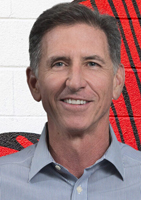When Drug Developers Convert To CDMOs

By Louis Garguilo, Chief Editor, Outsourced Pharma

“We have to change the team of 50 professionals from doing drug development internally and internal research projects to those who are now client-centric and serving the pharmaceutical industry.”
So says President and CEO Tim Scott of newly renamed and refocused AustinPx, Pharmaceutics and Manufacturing. The company was formally known as DisperSol. We spoke with Scott earlier on the advancement of spray drying to newer technologies for amorphous dispersion in poorly soluble drugs, the specialty of AustinPx.
DisperSol had developed and brought two candidates to late-stage clinical trials using their technology, but now it’ll license those out as it turns itself into a CDMO.

And what might we learn about outsourcing per se from witnessing the process? Can we unlock a better understanding of which CDMOs to partner with?
Scott’s the right person for this exercise. AustinPx is the second CDMO he’s established, the first being Pharmatek, which he co-founded in 1999 (and was purchased by Catalent in 2016).
This time, though, it’s a conversion, not an emersion.
Culture Curve
Scott was hired in April 2022 specifically to lead AustinPx into the world of service providers.
“It's a talented group of scientists with a strong culture. Everybody likes and respects each other,” were his first impressions.
Strong culture or not, it now must shift to one where employees are serving other pharmaceutical companies.
“That'll take a little while,” says Scott, "but they're getting used to it, and they understand we're creating value. It's been fun to work with smart people on this new model, and help them with that transition.”
* And herein lies our first key from this exercise – it requires an experienced professional at the top to lead such a transformation to a CDMO model. Even if your CDMO has always been a service organization, take a good look at its leadership ranks.
Scott spent much of his first months creating a new, “client-centric culture.” Not necessarily changing the science employees are doing, “but changing how they approach that and serve other people.”
“First of all,” says Scott, “we need to ensure our project managers are now fully outward focused.”
* Our second key learning – perhaps no other position is as important to your experience at a CDMO than the PM. Is yours looking after you? (Do you even have one at your CDMO?)
But its not just the PMs.
“The message is we need everyone to think about how you serve the customer,” Scott says. “How are you engaged with the customer? You could be a manufacturing technician, a research scientist, at the front desk; how does your work-life change relative to serving the client? What’s the best experience you can give them.”
This is where Scott’s earlier experience at Pharmatek is most helpful.
“We had a great reputation for client centricity,” he says. “There are some Pharmatek people we’ve already hired in at AustinPx. They get it, and they're spreading that culture throughout the organization.”
Now And Then
When Scott co-founded Pharmatek over 20 years ago, there wasn't much competition out there – certainly few CDMOs focused specifically on spray drying and poorly soluble compounds.
It also wasn’t normal for biotech customers to be virtual, and outsourcing virtually every drug development and manufacturing activity. The last decades have dramatically changed both the competitive landscape and the customer.
And it wasn't until 2007-08 that the larger pharma started realizing just how much outsourcing could work for them (and as well as for the biotechs). “When the economy tanked in 2008-09, and there were massive layoffs in the pharma industry, the outsourcing floodgates opened up,” recalls Scott.
“That whole ecosystem shifted, including pharma’s ‘development arms’ becoming the biotechs they acquired that had de-risked their molecules by working with CDMOs.”
Another development brought on by the passage of time and circumstance, says Scott, is that while in the 1990s most all the "A students" graduating from universities went to the pharma companies, and others ended up at the CDMOs, “that's completely changed.”
“The best students today say, ‘You mean, if I join a CDMO, I'll get the experience of working on 10 or 15 molecules a year?’
“CDMOs are really a respected part of the ecosystem now,” Scott says. And those graduates are sorely needed to bring new ideas and future leadership, and help with some of the worker shortages today.
*Which is key three – we talked about the need for experience above, but look for a good mix of veteran and younger talent at the CDMOs you are interested in working with.
Viva La Difference
Above all else, Scott believes what’s required today for a CDMO to be differentiated is the effective practice of client centricity he so often mentions, as well as an area of specialization.
“Who is going to serve me best? Who do I want to partner with long term?” are the questions drug sponsors should ask themselves.
For Scott and team, then, it’s now “a matter of flipping around to create that client-centric model.”
I wonder, though, how many current employees can successfully make the transition.
Scott says he started with an all-employee meeting where he explained to employees they would shift to a CDMO model.
"Some of you are going to enjoy this; others may feel this isn't necessarily for you, and that's okay," he said. "If you don't like client engagement – and more projects to work on – you’re welcome to go somewhere else."
Scott suspects he'll see some minor attrition. "We've had a couple people leave,” he says. “But for the most part, there's some good excitement and commitment. We have not asked anybody to leave."
Scott finishes up:
“It'll be that client experience, and the value of our brand, that’s important. Experience taught me that, and its more important than ever. We spend a lot of time talking about the brand. Our promise to pharma is they will have a certain experience. That experience is what we must build on. We must ensure every experience is positive."
And Scott has also learned that word of mouth in the pharma industry is a strong factor in CDMO selection. Especially negative word of mouth.
*Final key – Ask around; get references. People are open to discussing their experiences. Ensure all your CDMOs have had their proper conversions.
